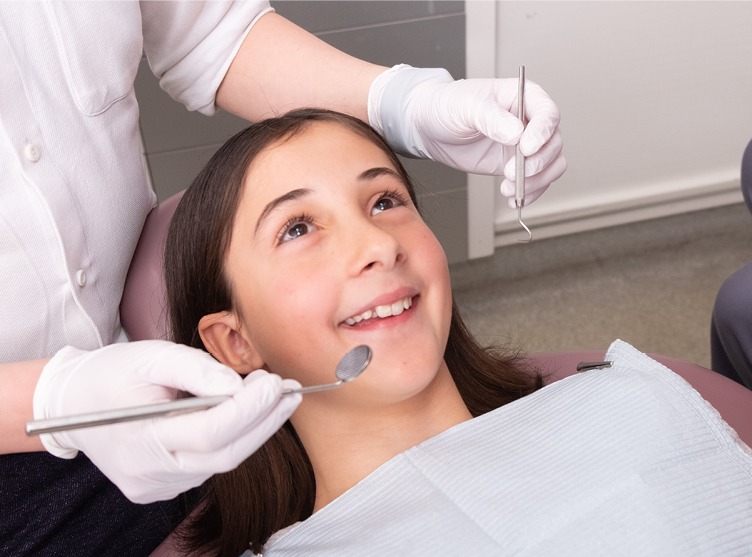The Buzz on Legacy Orthodontics
Table of Contents5 Simple Techniques For Legacy OrthodonticsA Biased View of Legacy OrthodonticsAn Unbiased View of Legacy OrthodonticsSee This Report on Legacy OrthodonticsAll about Legacy Orthodontics
At Advanced Orthodontics, we provide individuals with a holistic treatment experience. In addition, we provide flexible treatment timetables, flexible payment options and a fun, satisfying experience. leesburg orthodontics. Call ( 480) 357-4900 today to learn more and timetable a visit.An orthodontist is a dental expert educated to detect, protect against, and treat teeth and jaw irregularities. They correct existing conditions and are trained to recognize troubles that may develop in the future. Orthodontists function with people of any ages, from kids to adults. Individuals often link an ideal smile with healthiness.
Malocclusion, or misaligned teeth, can cause oral concerns, consisting of dental caries, periodontal condition, and hard or painful chewing. Yet not everyone is birthed with straight teeth. If you have a poor bite or large spaces in between your teeth, you may want to speak with a dental expert specializing in orthodontic treatment.
The smart Trick of Legacy Orthodontics That Nobody is Talking About
( Photo Debt: DigitalVision/Getty Images) Orthodontists use dealt with and removable dental gadgets, like dental braces, retainers, and bands, to change the position of teeth in your mouth. Orthodontic treatment is for dental abnormalities, consisting of: Jagged teethBite issues, like an overbite or an underbiteCrowded teeth or teeth that are too much apartJaw misalignmentThe objective of orthodontic therapy is to enhance your bite.
A healthy and balanced bite guarantees you can eat, eat, and speak effectively. While you might consider orthodontists as primarily for youngsters or teens that require dental braces, they can remedy dental issues at any age. Orthodontists attend college, oral institution, and orthodontic school. After college graduation, they spend 2 or 3 years in an orthodontic residency program.
, however not all dental practitioners are orthodontists. They focus on 2 areas: Exactly how to effectively and securely relocate teeth How to appropriately direct growth in the teeth, jaw, and faceOnce an orthodontist has finished training, they have the option to become board licensed.
Little Known Questions About Legacy Orthodontics.
Malocclusion leads to tooth congestion, a twisted jaw, or uneven bite patterns. Malocclusion is normally treated with: Your orthodontist connects steel, ceramic, or plastic square bonds to your teeth.
If you have only minor malocclusion, you may have the ability to make use of clear braces, called aligners, instead of conventional dental braces (https://www.callupcontact.com/b/businessprofile/Legacy_Orthodontics/9435468). Some people need a headgear to aid relocate teeth into line with stress from outside the mouth. After dental braces or aligners, you'll need to wear a retainer. A retainer is a custom gadget that keeps your teeth in position.
They can produce extra room in the mouth without having to pull teeth. Orthodontists make use of cables, medical screws, or plates to sustain your jaw bone.
You may need to see an orthodontist if you have: Crowding or not sufficient room for all of your teethOverbite, when your top teeth come your bottom teethUnderbite, when your bottom teeth are also far forwardSpacing or concerns with gapsCrossbite, which is when your top teeth fit behind your bottom teeth when your mouth is closedOpen bite or an upright space in between your front base and top teethMisplaced midline, when the center of your bottom and top teeth do not line up Correcting a dental malocclusion can: Make attacking, eating, and speaking easierImprove the balance of our face and your general appearanceEase discomfort from temporomandibular joint conditionsDifferent your teeth and make them simpler to clean up, assisting protect against tooth degeneration or tooth cavities It's commonly a dental expert that first notices misaligned teeth throughout a regular examination.
The Only Guide for Legacy Orthodontics

During your initial orthodontic assessment, you'll likely have: An oral examPhotos taken of your face and smileDental X-raysPanoramic (360 level) X-rays of your face and headImpressions to create molds of your teethThese examinations will aid your orthodontist know how to continue with your treatment. braces. An orthodontist is a dental expert who's had training to treat your teeth and jaw
An orthodontist is focused on your bite, so something like a broken tooth would certainly be dealt with by a dental expert. Orthodontists are focused on your bite, or the way your teeth fit with each other, and the straightness of your teeth.
Ever before wondered how celebs always seem to have flawlessly lined up teeth? Orthodontists are dental specialists that concentrate on dealing with abnormalities in the teeth and jaws.
The 10-Second Trick For Legacy Orthodontics

While braces are one of the most generally identified orthodontic therapy, orthodontists have a varied toolkit at their disposal. The details strategy chosen relies on the intensity of the case, the person's age, and individual preferences. These tried-and-true dental braces use a system of braces adhered to the teeth and attached by cables.
Clear aligners, like Invisalign, are a popular option for patients seeking a more very discreet therapy option. These detachable trays are tailor-made to considerably shift the teeth's setting. Headwear might be used along with dental braces or aligners to use extra targeted pressures, particularly for fixing jaw discrepancies. In situations of slim jaws, palatal expanders can be made use of to develop room for proper tooth placement.